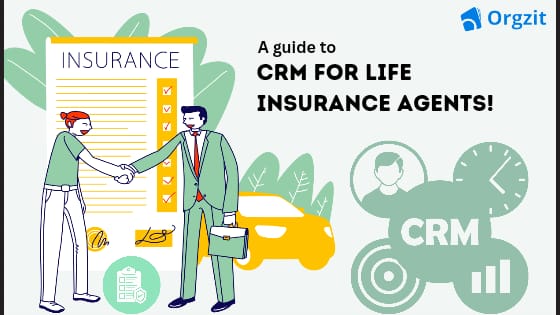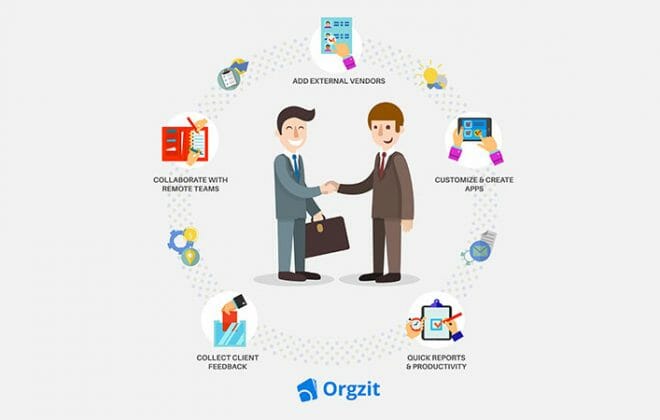ROI Analysis of CRM—Turn your CRM Investment into Unstoppable Sales
Every dollar invested needs to deliver a measurable return. Think of it like this — your CRM could be a gold mine of insights down the drain. But if you’re not using it effectively, you’re missing out on a HUGE opportunity.
Ask yourself first — What exactly do you want to achieve with your CRM? More leads? Higher conversion rates? Increased customer loyalty? Or something else? Once you know your goals, then you’re probably able to apply CRM to your business accordingly.
In 2011, Nucleus Research found that the average ROI of CRM was $5.60—meaning that for every dollar spent on a CRM solution, on average, companies earned back $5.60.
In 2014, Nucleus Research found that the return rose to $8.71—a 38 percent increase. A fully integrated CRM can drive even more profitability. Nucleus also found that CRM integration with other internal applications brought “productivity increases across sales, service, and operations and a 20 to 30 percent growth in business.”
What Matters in the Measurement of ROI?
There are different key metrics that matter in determining the incremental ROI of a CRM. You may choose to evaluate your ROI based on any or all of these metrics.
Before you measure the ROI on CRM, you need to note your baseline value and then the final value from CRM. Compare these two terms to see any changes—An increase in the value from the baseline value means you have some return on your CRM investment. The higher the final value, the higher the ROI.
When evaluating Return on Investment (ROI), it’s valuable to break down the key components—Cost and Benefits.
In terms of cost
1. Upfront Costs
– Initial expenses include CRM software licenses, employee training, and implementation costs.
– Example: A company invests $50,000 in CRM software and allocates $10,000 for employee training and onboarding.
2. Ongoing Costs
– Maintenance, updates, and support contribute to the total cost of ownership.
– Example: Annual CRM maintenance costs amount to $5,000.
ROI of the CRM should not be calculated on just upfront cost but also on the ongoing costs of maintenance, etc. Businesses usually do not consider the second kind of cost.
In terms of benefits
1. Efficiency Gains
– Streamlined processes lead to time savings and increased productivity.
– Example: CRM reduces manual data entry, saving each team member an average of 2 hours per week.
2. Customer Relationships
– Communication and personalized interactions contribute to improved customer satisfaction.
– Example: CRM insights enable targeted marketing, resulting in a 15% increase in customer satisfaction scores.
3. Sales Opportunities
– CRM helps identify and capitalize on sales opportunities, contributing to revenue growth.
– Example: Improved lead management through CRM leads to a 20% increase in sales conversion rates.
Significance of Long-Term Benefits
The next step is to understand the long-term benefits, which also need to be checked and marked in your checklist. While upfront costs are incurred once, the benefits of CRM extend over time, providing continuous value. The initial investment in employee training yields ongoing efficiency gains, and improved customer relationships contribute to sustained customer loyalty.
Let’s take a case study to understand this—The stages are
A. Establishing Baseline and Final Values
Before measuring ROI, establish baseline and final values. This involves noting the initial state of the business processes (baseline) and comparing it with the outcomes post-CRM implementation (final).
1. Baseline Value
– Example: Before CRM implementation, the sales team’s lead conversion rate was 10%.
2. Final Value
– Example: Post-CRM implementation, the lead conversion rate increases to 15%.
B. Calculating ROI
The ROI formula is applied using the baseline and final values–
ROI=(Final Value−Baseline Value / Baseline Value)×100
Example Calculation—
- ROI=(15%−10% / 10%)×100=50%
C. Interpreting Results
A positive ROI indicates a return on the CRM investment. In this example, a 50% ROI signifies a 50% improvement in lead conversion rates post-CRM implementation.
Actionable Checklist to measure ROI (CRM performance)
Measuring the Return on Investment (ROI) of a Customer Relationship Management (CRM) system requires a strategic approach and a set of actionable steps.
This checklist outlines measurable Key Performance Indicators (KPIs) for different teams—sales reps, sales managers, business owners, and other team members—and provides insights into maximizing ROI through research-backed strategies.
A. Sales Reps
1. Lead Conversion Rate
– Measure the percentage of leads successfully converted into customers.
– Example: Increase lead conversion rate from 10% to 15% within a quarter.
2. Sales Velocity
– Evaluate the speed at which leads move through the sales pipeline.
– Example: Reduce the average sales cycle duration by 20%.
3. Activity Metrics
– Track daily activities such as calls, emails, and meetings to gauge productivity.
– Example: Achieve a 10% increase in daily outreach activities.
B. Sales Managers
1. Pipeline Value
– Monitor the total value of opportunities in the sales pipeline.
– Example: Increase pipeline value by 25% through effective opportunity management.
2. Team Productivity
– Assess the overall efficiency of the sales team.
– Example: Improve team productivity by 15%, measured by completed deals per team member.
3. Customer Retention Rate
– Measure the percentage of customers retained over a specific period.
– Example: Maintain a customer retention rate of 90% or higher.
C. Business Owners
1. Overall Revenue Growth
– Evaluate the impact of CRM on overall revenue generation.
– Example: Achieve a 20% increase in annual revenue attributed to CRM efforts.
2. Customer Lifetime Value (CLV)
– Assess the long-term value of a customer relationship.
– Example: Increase CLV by implementing targeted CRM strategies.
3. Return on Investment (ROI)
– Calculate the financial return on the CRM investment.
– Example: Attain a minimum ROI of 150% within the first year of CRM implementation.
D. Other end-user
1. User Adoption Rate
– Evaluate how well non-sales teams are adopting CRM functionalities.
– Example: Achieve a 90% or higher user adoption rate among marketing and customer support teams.
2. Data Accuracy and Completeness
– Ensure data entered into the CRM is accurate and complete.
– Example: Maintain a 95% accuracy rate in customer data records.
Maximizing ROI Strategies
Maximizing your Return on Investment (ROI) involves strategic planning and execution. Here are the tips that might help you optimize your ROI—
- Regularly train teams on new CRM features and best practices, like conducting monthly training sessions to ensure teams are up-to-date.
- Encourage continuous learning and knowledge sharing among team members, like implementing a knowledge-sharing platform for CRM insights and success stories.
- Leverage CRM analytics tools for informed decision-making, like implementing advanced analytics to identify trends and opportunities.
- Conduct periodic audits to ensure data accuracy and relevancy, and perform quarterly data audits to maintain high-quality information.
- Integrate your CRM with other essential business systems for a unified approach, like using marketing automation tools for a lead-to-customer journey.
- Promote collaboration between departments by ensuring smooth data flow to facilitate collaboration between sales and customer support through CRM integration.
Give Orgzit a try and see how it can help you improve your business’s ROI. Contact us today for a demo!
Bottom line
- The success of CRM is measured through various metrics, including sales values, time per sale, lead conversion, and financial impact.
- Continuous monitoring, user training, and data quality checks are essential for optimal CRM performance.
- Aligning KPIs with specific objectives ensures a focused approach to measuring ROI.
- Regularly reassess the CRM strategy to adapt to evolving business goals and technological advancements.
FAQs
Maximizing ROI ensures that every dollar invested in CRM delivers measurable returns, contributing to overall business success. It’s crucial to extract the full potential from your CRM investment.
Different key metrics matter in determining CRM ROI, including lead conversion rates, sales velocity, activity metrics, pipeline value, team productivity, customer retention rate, overall revenue growth, customer lifetime value (CLV), and ROI.
Regular reassessment is essential, adapting to evolving business goals and technological advancements. Continuous monitoring ensures that your CRM strategy remains aligned with your organizational objectives.









